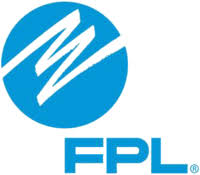FPL proposing nations largest community solar program
Florida Power & Light Company (FPL) filed a proposal with the Florida Public Service Commission (PSC) for a new community solar program that would offer FPL customers the opportunity to help accelerate the cost-effective growth of solar in Florida by subscribing to a portion of new solar power capacity. In return, they will receive credits that are expected to reduce their monthly bills over time.
Weve been aggressively expanding solar with one goal in mind: bringing more solar to all of our customers cost-effectively while continuing to keep their bills lower than 90% of the country, said Eric Silagy, president and CEO of FPL. This innovative program is another major step forward in our 30-by-30 plan, which is one of the worlds largest solar expansions, and also an unprecedented opportunity for our customers to harness the power of the sun like never before.
FPL SolarTogether will significantly expand solar energy in Florida. Pending PSC approval, FPL plans to install 1,490 MW of new universal solar at 20 new solar power plants across its service territory to meet anticipated customer enrollment in the program. Built cost-effectively, the new solar power plants attributed to the program are projected to generate an estimated $139 million in net savings for customers over the long term, primarily from avoided fuel and other system savings. Participating customers will receive direct credits for the savings on their monthly bills, and the program is designed to also contribute a portion of the savings to all customers, which will help keep fuel costs low for everyone.
If approved, FPL SolarTogether will be the largest community solar program in the United States. According to the Solar Energy Industry of Americas latest information, a total of 1,298 MW of community solar has been installed in the U.S. through the third quarter of last year.
This program will more than double the amount of community solar currently in the U.S., said Silagy.
FPL studied community solar programs offered throughout the country, including Florida. Program participants will not be tied to a long-term contract and can terminate or reduce their subscription at any time. In addition, because the subscription is associated with a customer account and not a physical address, program participants who move within FPLs service area can maintain their subscription benefits. FPL expects program participants to achieve a simple payback on their subscription within seven years. FPL also will retire Renewable Energy Certificates (RECs) on behalf of participants who are looking to meet sustainability goals.
In order to gauge potential customer interest in a program like this, FPL has been working with its largest energy users. More than 200 of FPLs largest energy users including municipalities, national retail chains, universities, banks, restaurants and schools have committed to participate, providing the foundation for such a large program.
Broward College is committed to the education and advancement of sustainable energies that improve community wellness, said John Dunnuck, CEO, Broward College. The Colleges partnership with FPLs SolarTogether program is an investment in Floridas future.
If passed, the new energy centers built through the program will increase the use of solar power on the energy grid, helping to offset the use of other power plants fueled by non-renewable resources. The first six solar plants, each of which will have about 300,000 solar panels and be capable of generating 74.5 MW of solar, are scheduled to be operational in early 2020, with the remaining 14 facilities planned for 2021. FPL has already secured enough land to build all of these plants and the company plans to announce the individual locations in the future.
FPLs SolarTogether program provides an innovative approach to addressing business and residential needs for embracing clean energy in Florida and cost-effectively expanding the Sunshine States renewable energy footprint, said Tim Center, executive director of Tallahassee-based, Sustainable Florida. This initiative chalks up major wins for Floridas environment and sustainability.
In response, Southern Alliance for Clean Energys executive director Dr. Stephen A. Smith issued this statement:
SACE welcomes the news of Florida Power & Lights newly-announced SolarTogether Program. We believe this will be a significant move to provide low-cost solar power to a wider range of customers throughout Florida. We believe that this program, coupled with FPLs previously announced 30 x 30 commitment to utility-scale solar, shows that the utility is serious about advancing solar power in Florida. This program appears to make clean, solar power more widely available in the Sunshine State. We are carefully reviewing the details of this proposal and will provide more comments as we review this filing.
Indianapolis Power & Light (IPL) is also considering a community solar program. For more information see:




